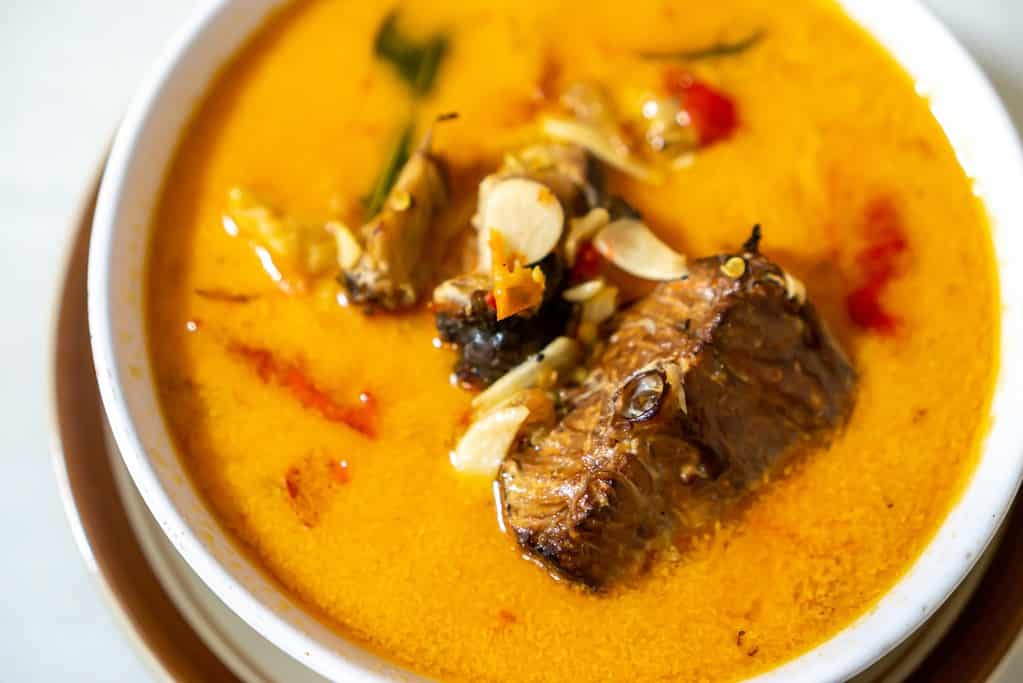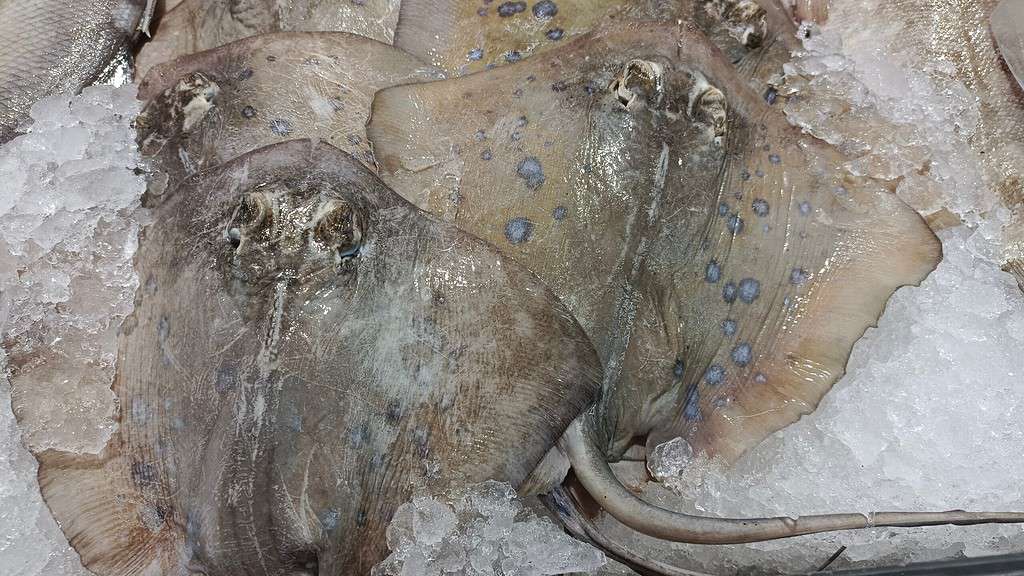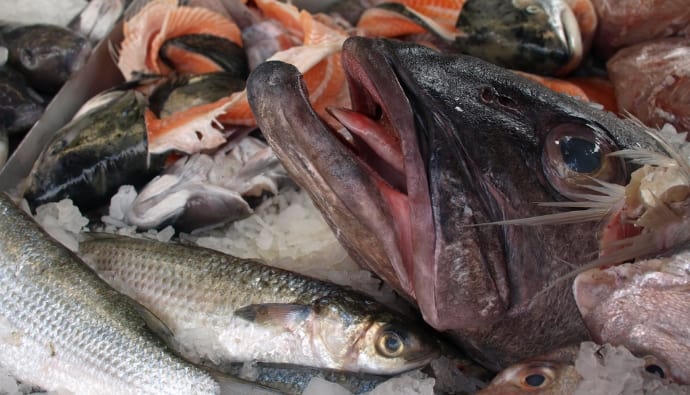Thinking of trying stingray for the first time and feeling uneasy? In this article, we answer your questions about what it tastes like, the textures, and what dishes you can make. Whether you’re a seasoned foodie, an environmental enthusiast, or simply a curious reader, journey with us as we explore this lesser-known side of our culinary world, you might be surprised by what you discover.

The Short Answer
Yes, people do eat stingrays in certain parts of the world, particularly in regions of Asia, Africa, and the Caribbean. Stingrays, when properly prepared, are safe to consume and offer a unique flavor profile that’s often described as a cross between fish and crab.
The Long Answer
The meat has a distinct, firm, yet slightly elastic texture, similar to scallops. It’s crucial to source stingrays responsibly due to ethical and sustainability considerations, and preparation should be handled with care due to the stingray’s venomous barb. Dishes range from grilled stingray slathered in spicy sambal sauce in Singapore and Malaysia to stingray soup in Korea, showcasing the versatility of this unique seafood.
Is It Safe to Eat Stingray?

Stingrays are indeed consumed in various parts of the world. You can even cook stingrays in several different ways.
Like any seafood, stingrays are safe to eat as long as they are properly handled and prepared. However, their preparation is a bit more involved than your average fish due to their unique anatomy.
Stingrays, these enigmatic marine creatures, hold a revered spot in the gastronomic landscapes of many cultures, particularly in the diverse culinary panorama of Asia, where their consumption is seen as a gourmet experience.
With culinary methods spanning from the grill’s heat to the stew pot’s slow simmer, stingray is served up in an impressive array of dishes.

Boasting a unique flavor profile and an intriguing texture, stingray invites the palates of the intrepid and the epicurious to venture beyond the confines of traditional seafood and step into a world of gastronomic discovery.
But here’s a fun fact! Freshwater stingrays have a more toxic venom compared to marine stingrays. This is mainly because of their cellular makeup.
Stingray Taste and Texture
If you haven’t yet had the chance to taste stingray, allow your curiosity to be piqued. Picture a flavor that walks a delicate line between the familiar tastes of fish and crab, adding a subtle, slightly sweet flavor that sets it apart from more conventional seafood. But the gastronomic journey doesn’t stop at taste alone.

The texture of the stingray is a culinary exploration in its own right. Imagine a tender, almost gelatinous flesh that, when cooked properly with precision, avoids being overly slimy.
It possesses a firmness that brings to mind the delicate bounce of scallops, paired with a unique elasticity. This symphony of flavors and textures sets stingray apart, offering a culinary adventure that’s both tantalizing and out of the ordinary.
Compared to more common seafood, the taste of stingray is perhaps most similar to a mild white fish but with a bit more sweetness.
The texture, however, is more reminiscent of shellfish like scallops or crabs, with its firm yet slightly springy nature. These unique characteristics make stingrays a delicacy for those seeking to venture beyond conventional seafood.
Remember, as with all seafood, the quality and freshness of the stingray and its preparation significantly influence the taste and texture.
If you’re considering adding stingray to your culinary adventures, sourcing from reputable suppliers and following trusted recipes are key to ensuring a safe and enjoyable dining experience.
How Are Stingrays Prepared for Eating?

Planning to try eating stingray or want to cook stingrays? This task requires a certain level of skill and knowledge, primarily due to its unique anatomy and its infamous stinger. However, it’s a fascinating culinary adventure once you understand the process.
Before you cook stingray fish, it needs to be cleaned, and the usable stingray meat needs to be separated from the cartilaginous skeleton. This process involves removing the stinger, trimming away the wings’ outer layer, and extracting the meat.
It’s important to note that caution should be exercised during these initial steps due to the venomous barb, so it’s often best left to professionals.
Once cleaned and filleted, the stingray meat is versatile and can be prepared using various cooking methods. Below, we delve into some common recipes and dishes if you want to eat stingrays.
Grilled Stingray
One of the most popular ways to cook stingray as a delicious meal, particularly in Southeast Asia, is to grill it. In Singapore and Malaysia, a dish called “Sambal Stingray” is common at hawker centers.
The stingray is slathered in a spicy sambal sauce, wrapped in banana leaves, and then grilled to perfection. The resulting dish balances the stingray’s sweet meat with the spice’s fiery kick and the smoky flavor imparted by the grill.
Baked or Broiled Stingray
For a more Western take, stingray can be baked or broiled. One popular preparation involves marinating the stingray in a mixture of lemon juice, olive oil, and fresh herbs before baking it in the oven. The result is a dish that’s light and fresh and allows the natural flavor of the stingray to shine.
Each of these dishes showcases the versatility of stingray as a culinary ingredient. Whether it’s grilled with a spicy sauce, simmered into a flavorful soup, or baked with a simple marinade, stingray offers a unique taste experience that adventurous eaters and seafood lovers will certainly appreciate.
Can You Eat Stingray Raw?
Eating raw seafood is practiced in several cultures worldwide, most notably in Japanese cuisine, which offers delicacies like sushi and sashimi. You can also eat stingray raw as sushi or sashimi.
Conclusion
For everyone from the gastronomic explorer to the environmentally-conscious observer, diving into the culinary narrative of the stingray offers an enticing journey into the expansive universe of international cuisine.
Our exploration confirms that stingrays aren’t just marine spectacles but also find their place in the global dining scene. Moreover, we’ve navigated through an assortment of intriguing culinary techniques and dishes that highlight this distinctive seafood in a myriad of culinary cultures.
With its unparalleled blend of flavors and intriguing consistency, Stingray offers an epicurean encounter that diverges from the well-trodden path of Western foodways, beckoning those with adventurous palates.
While it may not be for everyone, adventurous eaters might find exploring these dishes rewarding.
We’ve also underscored whether it’s safe to eat and ethical considerations when sourcing and consuming stingray. Ensuring that these creatures are harvested sustainably and prepared correctly is crucial for maintaining our marine ecosystems and the health and safety of those who choose to consume them.
We hope this exploration of eating stingrays has been as informative and engaging for you as it has been for us. May it inspire a deeper curiosity about our food, the cultures it originates from, and the incredible biodiversity our world offers.
Remember, every bite we take is a statement about our values and our connection to the world. So, whether you’re digging into a familiar dish or daring to try something new like stingray, let’s make those bites count.





 Facebook
Facebook YouTube
YouTube



